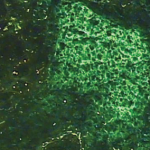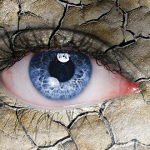A fascinating article by Rosenthal et al on chronic ocular pain in patients with dry eye following Lasik surgery and in patients with chronic, severe dry-eye syndrome noted several key findings5:
- In patients with acute painful eye (such a corneal abrasion), the ocular pain is largely removed with topical anesthesia.
- In patients with chronic, longstanding ocular pain due to SS, the level of pain (rated on a 1-to-10–point scale) only decreased by a small degree (about 30% to 50%) with topical anesthetic.
- The discrepancy between acute and chronic pain perception is not due to malingering behavior, but to changes in the brain’s mapping of nociceptive signals as a result of chronic stimulation.
In our clinical trials with biologic agents, we have succeeded in improving a spectrum of extraglandular manifestations and associated biomarkers. However, the most disabling symptoms of ocular and oral discomfort, fatigue, and myalgias have not shown significant differences…
Thus, patients with SS are more refractory to symptomatic improvement, and we do not know why. As rheumatologists, we need to formulate better treatment options for our patients with SS. At present, we can summarize some of the major observations and list some of the obstacles toward formulating better treatment algorithms.
- The symptoms most troublesome and disabling to patients with SS—dryness and fatigue—have not responded adequately to a variety of biologic agents.
- Extraglandular manifestations of SS, such as vasculitis and associated biomarkers, have responded to biologic agents, so we know that the biologics are working, at least in part, on the systemic manifestations of SS.
- We can dissociate, at least partly, the pathways of “peripheral” vasculitic inflammation from the pathways that lead to symptoms of oral and/or ocular pain and fatigue.
- Future attention—including animal models—is needed to examine the actions of inflammatory processes on sites of neuropathic pain (trigeminal nerve, dorsal root ganglia, brain) that may not be reflected in the traditional biomarkers or cytokines measured in blood or salivary gland tissue.
Successes in SS: An Oxymoron?
We have learned that cytokines, chemokines, and neurokines are staggeringly complex. In rheumatoid arthritis (RA) and several related arthropathies, initial trials with tumor necrosis factor inhibition were successful beyond our wildest dreams. These successes led to cloning further signaling pathways and additional therapeutic agents for RA.
Patients with multiple sclerosis (MS) and patients with depression frequently complain of dryness as well as fatigue. Instead of simply labeling this malingering behavior, it is an opportunity to understand the models of cortical and subcortical function that we have not addressed in SS. The problems in combining immunologic and neurological approaches are partly bureaucratic, as well as scientific.


